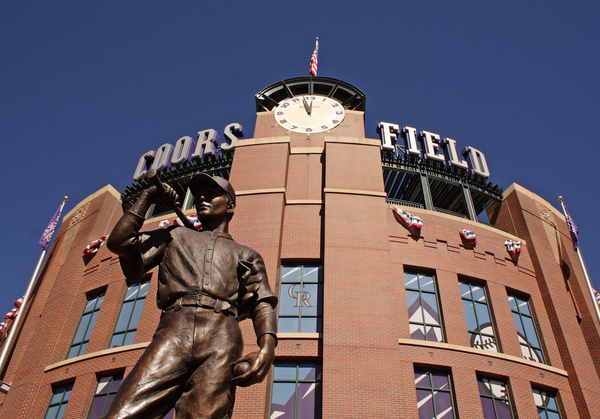The Local newsletter is your free, daily guide to life in Colorado. For locals, by locals.
A dark cloud engulfed Colorado Rockies fans last summer as the Mile High City met another lost season with resignation. Since 2009’s playoff berth, this sense of defeat is a summer ritual in Denver. Usually, spring training and the Arizona temperatures burn off some of the haze and inject optimism into the club. This year, the trucks carrying the team’s gear have not yet returned from spring training, and already I’m seeing little hope for the 2015 Rockies.
If people talked about the Colorado Rockies during this last month of spring training—a rare occurrence—then they noted two things: The team has a formidable hitting lineup, and many pitching question marks. The Rockies fielded the worst pitching staff in baseball a year ago and, unfortunately for fans, they have not improved.

Most teams attempt to create a rotation of five pitchers to carry the load of the season, but recently the Rockies have averaged 10 starting pitchers a year. Last year, the Rockies went through 15 starting pitchers due to injuries, poor performance, overly optimistic call-ups and a strange double-header. Through the fluidity of the starting positions, the Rockies accumulated Major League Baseball’s worst earned run average across the board.
Starting pitching is the cornerstone of a baseball team, allowing hitters to work through slumps, which frequently plague the Rockies when they descend from altitude on road trips. Strong starting pitching takes pressure off the relief pitchers in the bullpen by allowing them to pitch fewer innings. Unfortunately, short outings by the starters in 2014 led to fatigued arms in the pen and resulted in many lopsided Rockies losses last year.
While not stellar at the start of spring training, the Rockies rotation at least appeared functional with five pitchers: Jorge De La Rosa, Jordan Lyles, Jhoulys Chacin, Kyle Kendrick, and Tyler Matzek. However, an injury to De La Rosa and the Rockies releasing Chacin from the team because of concerns over arm strength destabilized the rotation. Instead of depth, the Rockies have young prospects, including Eddie Butler and Jonathan Gray, they hope can develop on the fly. If the young arms mature quickly, a strong hitting lineup could fuel the Rockies.
This season was supposed to be a clean slate for the Rockies. Longtime general manager Dan O’Dowd resigned from the front office late last year, along with his partner in mishap Bill Geivett. However, their in-house replacement Jeff Bridich feels too familiar. Case in point: The Rockies are paying their five starting pitchers salaries in total about what they pay star shortstop Troy Tulowitzki.
For the future, Bridich does appear open to change. Rockies manager Walt Weiss has decision-making power and the new pitching coaches are hoping to buck the mythology created by O’Dowd that pitching at altitude is impossible.
With the Nuggets and Avalanche both missing the playoffs for the first time since 1993, a long summer of competitive baseball is just what Denver needs. I would love to head back to Coors Field after the All-Star Break to see the Rockies play a meaningful series, but that hasn’t happened since 2010. But right now, I don’t see more than a glimmer of hope going into the season—and that’s not enough to get really excited for Rockies baseball in 2015.








